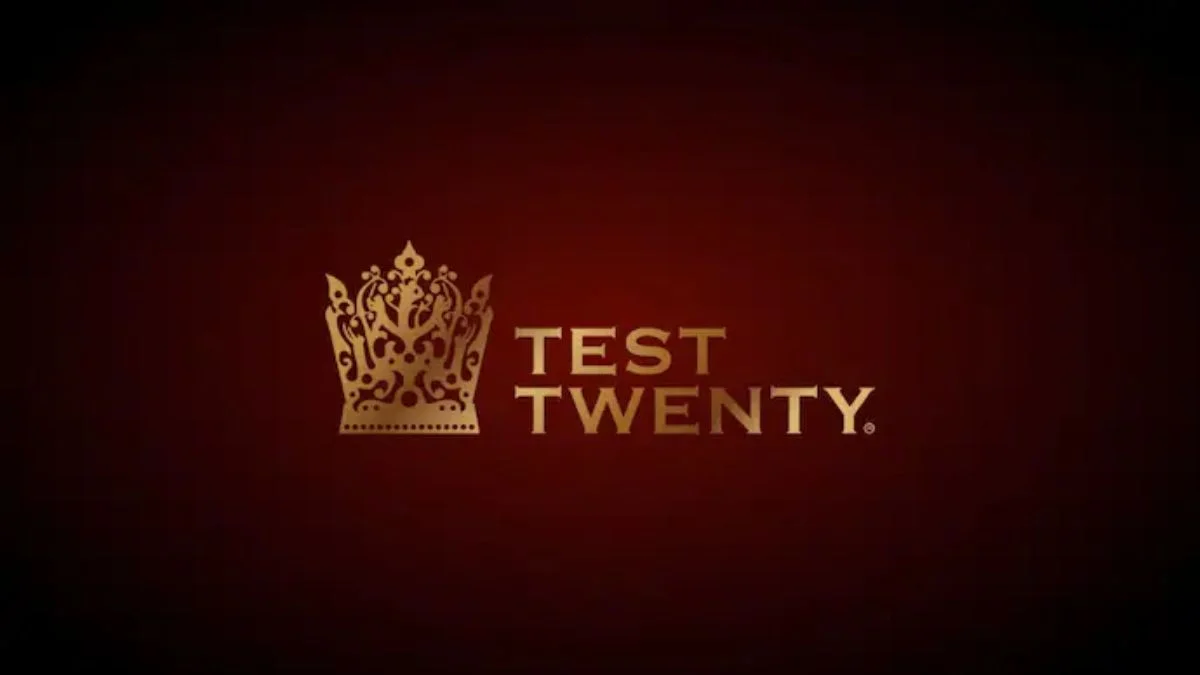Test Twenty: Cricket’s New Era Begins With Hybrid Format

Cricket, a sport steeped in tradition and evolution, is preparing to enter its most transformative chapter yet. On October 16, the cricketing world welcomed a daring innovation- Test Twenty- a new hybrid format that merges the tactical mastery of Test cricket with the thrill and tempo of T20s. Designed by sports entrepreneur Gaurav Bahirvani, this format is more than a game- it’s a global talent movement aimed at redefining the sport for the digital age.
A Format Bridging Eras
At its core, Test Twenty is a one-day, 80-over match played over four innings- two per team, each capped at 20 overs. Much like a traditional Test, teams bat twice, building their innings over time, but with the urgency and time constraints of a T20 match. The result? A unique cricketing experience where strategy meets speed, and patience meets power.
The matches will be played in whites, using the red ball, retaining the classical feel of Test cricket. Outcomes include a win, loss, tie, or draw, offering the full range of cricket’s dramatic possibilities.
“Test Twenty brings back the art and rhythm of the sport, yet keeps it alive with modern energy,” said Sir Clive Lloyd, legendary West Indies captain and advisory board member.
A Global Youth Platform
But Test Twenty isn’t just about changing the way cricket is played- it’s about who gets to play it. Aimed at cricketers aged 13 to 19, it introduces a global development league under the banner of the Junior Test Twenty Championship (JTTC), set to begin in January 2026.
The inaugural season will feature six franchises:
- Three Indian cities
- Three global cities: Dubai, London, and a U.S. city (yet to be announced)
Each team will comprise 16 players- an equal mix of Indian and international youth- showcasing the best emerging talent from around the world.
“This is cricket’s NCAA moment,” said Bahirvani. “We’re creating a connected global ecosystem where young players, regardless of background or geography, have a clear path to the top.”
Tech-Driven Talent Scouting
What sets Test Twenty apart is its AI-first approach to scouting and selection. At the center of its talent engine lies the AI Discovery Engine, a proprietary platform that:
- Combines video analytics, motion sensor technology, and machine learning
- Evaluates players based on skill, potential, temperament, and cricketing intelligence
- Eliminates bias and levels the playing field
A standout innovation is the Test Twenty Intelligence Index (TTII)- a tool that assesses players’ decision-making, tactical thinking, and mental toughness under pressure.
Players can enter through two paths:
- Direct Entry: via recommendations from certified coaches or past players
- Standard Entry: through a rigorous multi-level evaluation, starting with AI analysis and leading to live trials
The top 300 players from these pools will enter the Global Auction, where teams draft their squads. Those not selected remain in the ecosystem through a Wildcard Pool, eligible for mid-season call-ups.
Rules with a Purpose
Test Twenty doesn’t just borrow from the existing formats; it refines and fuses them:
- One PowerPlay per team: lasting 4 overs, used once across both innings
- Follow-on rule: Enforced with a first-innings lead of 75+ runs
- Max 5 bowlers per match: Each can bowl up to 8 overs
- Red ball + white kits: maintaining the Test-match aesthetic
“It’s cricket without fear- but it still teaches balance and survival across two innings,” noted AB de Villiers, a key supporter and advisory board member.
Backed by Legends
Test Twenty has attracted a powerhouse advisory board, including:
- AB de Villiers – South African batting maestro
- Sir Clive Lloyd – West Indies legend
- Matthew Hayden – Former Australian opener
- Harbhajan Singh – Indian spin great
Each has voiced strong support for the format’s intent, design, and potential to rejuvenate the sport from the grassroots up.
“We no longer have a national academy in Australia- this could be the next best thing,” said Hayden, highlighting the lack of structured youth development in some cricketing nations.
Also Read: Cricketers With A Hundred Plus 5-Wicket Haul In A Test Match
A Movement, Not Just a Match
Beyond the competition, The Fourth Format- the organization behind Test Twenty- envisions a broader ecosystem. Through Tech-Transfer Partnerships (TTPs), its scouting technology and analytics systems will be made available to state associations, academies, and even national boards. The goal is not to compete with existing systems, but to enhance them with better data and wider reach.
“We’re not a rebel league,” said Bahirvani. “We’re allies- here to complement cricket boards, not challenge them.”
The format also promises inclusivity, with girls’ editions of the JTTC to be introduced from the second season onwards.
The Road Ahead
The first season, to be played in India in early 2026, will be a litmus test for the format’s promise. The blend of strategy and spectacle, the use of AI and analytics, and the global approach to grassroots cricket position Test Twenty as more than just a new format- it’s a possible blueprint for the future of the sport.
